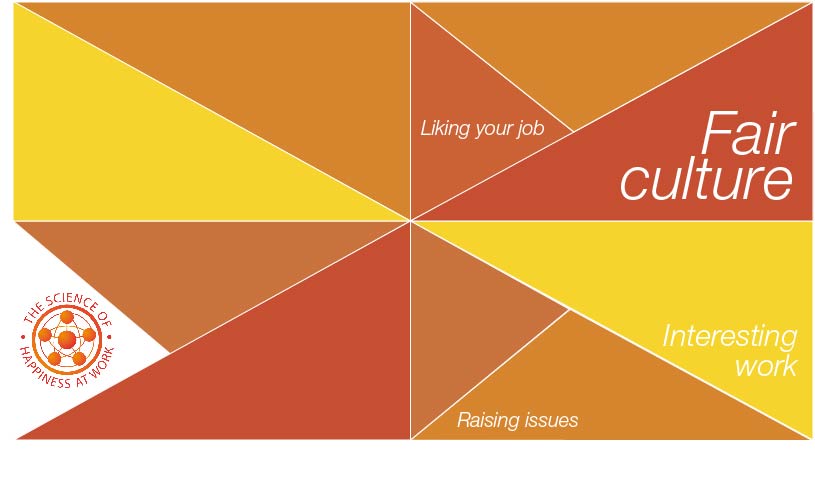You know how important yet challenging it is to quantify the return on your learning and development spend. But now, recent findings by iOpener Institute can help you justify your investment (ROI). Here are some figures you’ll be interested in.
When employees believe that they have plenty of opportunities for learning, it turns out that they:
- are 17% more on-task
- make 24% more effort in terms of Contribution
- are 29% happier at work
compared to employees who don’t have sufficient learning opportunities.
Every organization wants its employees to acquire knowledge and develop more skills, but it turns out that the additional, indirect benefits of learning programs reach beyond the results you’d expect.
Everyone wants to learn
iOpener’s Happiness at Work Assessment has been looking at the link between individuals’ and teams’ happiness and performance since the early 2000s. In the earlier versions of the survey, participants were asked about whether they enjoy learning; the answer to which was a consistently high mean score of 6.4 out of 7. Everyone wants to learn. It echoes Humanistic psychology, popularized by Carl Rogers and Abraham Maslow (Koltko-Rivera, 2006), based on the supposition that you want to experience as many fulfilling moments as you can. And it emphasizes the human capacity to lean in, towards choice and growth. It points towards the core of iOpener’s Performance Happiness Model, to ‘Achieving Your Potential’.
But when a question yields such a high mean score after years of asking tens of thousands of respondents, it’s no longer an insightful question to ask. So, in 2017, we started asking a different question, this time; “Does your organization provide sufficient opportunities for learning?”
We analyzed more than 10,000 responses to this question, comparing those who answered positively about opportunities for learning in their organization (a 6 or a 7 out of 7) with those who answered negatively (a 1 or a 2).
17% more on-task
The concept time-on-task (or focus on task) was a term coined by economist Edmund Phelps, winner of the 2006 Nobel Memorial Prize in Economic Sciences. In simplistic terms, time-on-task means the time that you’re doing what you’re paid to do. Our respondents to the Happiness at Work Assessment self-assess the percentage of their workday that they consider themselves to be on-task. Responses show that those who are the most happy at work are spending just over 80% of their time on-task, compared to those who are the least happy at work who self-declare to be just 40% on-task.
But the fact that those who have plenty of opportunities for learning are 17% more on-task compared to those who are learning-deprived is also interesting in itself. It demonstrates that when an organization invests in them, the employee is able to sustain more focus on their job, as if reciprocity were at play.
We did the maths to calculate what being 17% more on-task means. It equates to being on-task almost a full day more per week for full time (i.e. 5 days a week) employees. Based on the UK’s 2021 average salary, this means these individuals are putting in an additional £6,500 worth of productivity each for your organization per year.
24% more effort / Contribution
iOpener’s Performance Happiness Model (below) shows the tangible items that link happiness at work to performance. These 25 items are clustered into factors that are the drivers of happiness at work. Contribution is the first of the 5Cs and represents the effort that someone makes at work as well as the perception of that effort.
When opportunities for learning are many, respondents’ sense of overall Contribution is 24% higher compared to learning-deprived respondents. This means that they report feeling heard, respected by their boss and appreciated. They enjoy getting positive feedback for the effort they make as well as results they achieve, having clear objectives, achieving their goals, being able to raise issues that are important to them and feeling secure in their job.
Happiness at Work is a mindset that enables action to maximize performance and achieve potential.
29% happier at work
They are also so much happier at work, meaning that they have developed a mindset that is conducive to enabling action to maximize performance and helps them achieve their potential. It’s this happiness mindset that drives engaged behaviors at work.
Learning and development, and a sense of growth, feeds happiness at work and general happiness. Prof Sonja Lyubomirsky carried out a meta-analysis of the link between happiness and success (Sin & Lyubomirsky, 2009). She found that this is not a two-way street. It’s just one-way. Happiness precedes and predicts success.
There are direct as well as indirect factors involved. Of course, having more knowledge and skills enables you to engage more with tasks at hand. But, indirectly too, what we know is that when you choose or are selected to attend a learning programme, you report that it also engenders feelings of pride, status, worthiness, belonging, loyalty and feeling respected. Due to the social aspect of learning programmes, you know that it helps you expand your network and create social connections across your organisation and beyond as well. Learning taps into your human urge to achieve your potential. Such opportunities feed that drive.
Get your own Happiness at Work Assessment
To take the Happiness at Work Assessment and to get your own free, 9-page confidential report into your Performance-Happiness, go here.
If you’d like to have a conversation with an iOpener Happiness at Work expert about getting Happiness at Work insights for your team or your organization, please email Oriana.tickell@iopener.com
Bibliography
Koltko-Rivera, M. E. (2006). Rediscovering the later version of Maslow’s hierarchy of needs: Self-transcendence and opportunities for theory, research, and unification. Review of General Psychology, 10 (4), 302–317. https://doi.org/10.1037/1089-2680.10.4.302
Sin, N., & Lyubomirsky, S. (2009). Enhancing Well-being and alleviating depressive symptoms with positive psychology interventions: A practice friendly meta-analysis. Journal of Clinical Psychology, 65 (5), 467–487.


SUBMIT YOUR COMMENT